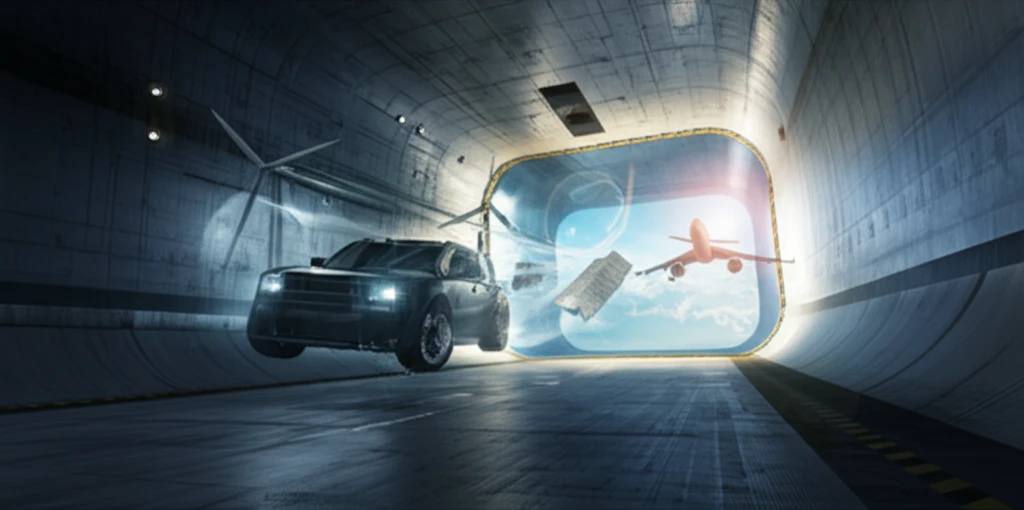
Beyond Flight: How Wind Tunnels Shape Our World
"More than just planes: Discover the surprising ways wind tunnel technology impacts everything from skyscrapers to sustainable energy solutions."
Wind tunnels are the unsung heroes of modern design, playing a pivotal role in shaping the world around us. While often associated with the aerospace industry, their influence extends far beyond the realm of airplanes and rockets. These powerful testing environments allow engineers and designers to simulate the effects of air movement on a variety of objects, ensuring optimal performance and safety.
In recent years, advancements in computational fluid dynamics (CFD) have emerged. However, wind tunnel data remains essential for validating simulations and informing critical design decisions. This article explores the diverse applications of wind tunnels, highlighting their ongoing importance in a wide range of industries.
From optimizing the aerodynamics of high-speed trains to enhancing the stability of skyscrapers, wind tunnels are at the forefront of innovation. Whether you're an aspiring engineer, a design enthusiast, or simply curious about the forces that shape our world, prepare to be amazed by the versatility and impact of wind tunnel technology.
What Exactly is a Wind Tunnel and How Does It Work?

At its core, a wind tunnel is a device designed to generate a controlled stream of air. This airflow is directed over a model or prototype, allowing researchers to observe and measure the effects of wind forces. By carefully manipulating variables such as air speed, pressure, and temperature, engineers can simulate real-world conditions and gain valuable insights into aerodynamic performance.
- Subsonic Wind Tunnels: Ideal for testing objects at speeds below the speed of sound (Mach 0.8).
- Transonic Wind Tunnels: Used for testing objects at speeds around the speed of sound (Mach 0.8 to Mach 1.2).
- Supersonic Wind Tunnels: Designed for testing objects at speeds above the speed of sound (Mach 1.2 to Mach 5).
- Hypersonic Wind Tunnels: Used for testing objects at very high speeds, typically above Mach 5.
The Future of Wind Tunnel Technology
As technology continues to evolve, wind tunnels are likely to become even more sophisticated and versatile. Advancements in sensor technology, data analysis, and computational modeling will enable engineers to gain deeper insights into aerodynamic phenomena, leading to further innovations across a wide range of industries. From sustainable transportation to energy-efficient buildings, wind tunnels will continue to play a vital role in shaping a safer, more efficient, and more sustainable future for all.
